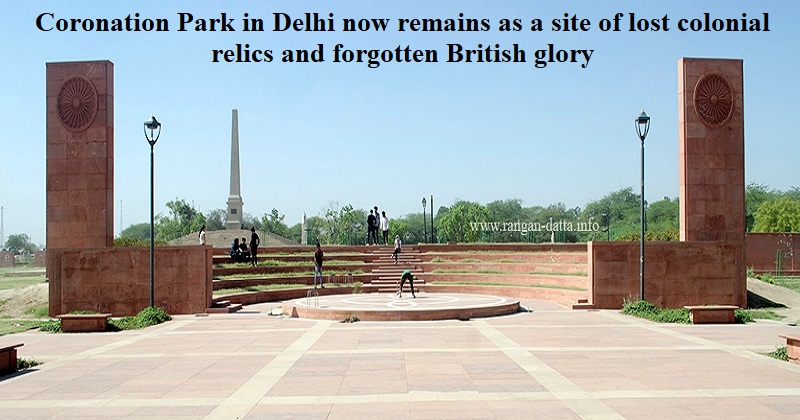
The Coronation Park in Delhi, which was once a symbol of British imperial grandeur, has now become an abandoned site where locals go for strolls, cycling, and to scribble their names on the old walls. The 52-acre park was built to commemorate the legacy of the British Empire, but today it stands as a lost relic of the Raj. The park is located in New Delhi’s Burari area, 17 km away from the busy Connaught Place and 19 km from India Gate. It is maintained by the Delhi Development Authority (DDA) and features monuments, paved pathways, plants, and trees. At the entrance of the park stands a large tricolour flag, and visitors can enter for free.
The park was named Coronation Park because it witnessed three coronations of British monarchs. The first was in 1877 when Queen Victoria was proclaimed Empress of India, followed by King Edward VII’s accession celebration in 1903. The last coronation at the site was of King George V as Emperor of India in 1911, which was attended by all princely states. Delhi was chosen as the site for the park due to the city’s historical legacy in hosting such royal events, including durbars, an Indian imperial-style mass assembly initiated by Lord Lytton, the then Viceroy of India.
Apart from coronations and durbars, the Queen-Empress, Mary of Teck, used to bestow the Kaisar-i-Hind medal upon all the Governors of the provinces at the site. The Queen also laid the foundation stone for the Viceroy’s residence, which was later changed to a flood-prone area. The park has the largest and tallest statue of King George V, which was moved here in the mid-1960s from a site opposite India Gate in the centre of New Delhi. The statue stands opposite the obelisk called the Coronation Memorial, which commemorates the 1911 Durbar when George V laid the foundation stone for the new capital city of New Delhi.
The obelisk is made of sandstone and stands erect over a high-rise square plinth with steps on all four sides. Four stone statues of Viceroys, including Lord Hardinge, Lord Willingdon, Lord Irwin, and Lord Chelmsford, also stand in the park. Some of these statues have missing plaques or washed-away letters, and visitors have used the plinths to scribble their names all over. The park’s desolate state stands in stark contrast to the heavy traffic of northern Delhi’s urban sprawl, and many people are generally unaware of its place in the history of the country.
In 2005, the Indian National Trust for Art and Cultural Heritage (INTACH) and the Government of Delhi resolved to restore Coronation Park, which was in a state of neglect. The DDA prepared a Draft Zonal Development Plan to develop the area as a tourist spot since it is very close to the National Highway 1 (NH1) bypass. However, the park largely remained in a state of neglect in 2017 after missing several project deadlines.

Post Your Comments